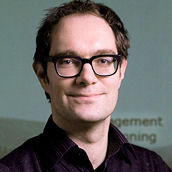Dr Bethanna Jackson is a Senior Lecturer School of Geography, Environment and Earth Sciences at Victoria University Wellington.
Bethanna’s research addresses the impact of land management and climate change on multiple ecosystem services, including flood risk, agricultural productivity, water quality, biodiversity, erosion, cultural services, green-house gas emissions, and amenity/socio-economic impacts. We talk about the LUCI project – a land management decision support framework – in particular how well we understand processes across multiple scales of time and space.
Talking points
Sustainable: Nothing is truly sustainable… I don’t truly have a definition which encumpasses every aspect of sustainablitly.
Success: It’s been a huge success developing this framework, which is a huge step forward because we are now able to look at the impact of many different environmental variables.
Superpower: My ability to be non-judgemental and provide a platform for sustainable development.
Activist: Yes, in the aspect that I am acting to create change and I believe very strongly in what I am doing… I don’t consider myself to be an activist as I actually try to keep certain environmental opinions to myself because I think it is very important that I am as objective as possible in putting this framework together.
Motivation: I really enjoy what I do, and I do feel like I’m making a difference to the world!
Challenges: I am looking forwards to more and more of my students getting out and taking their ideas out into the world. I’ve got some really good collaborations forming, so I am hoping that in a couple of years we will have produced something that is being applied quite broadly.
Miracle: Showing a bit less fear towards people in other cultures and accepting more refugees.
Advice: Whenever you are thinking about sustainability try and think beyond specific issues.


